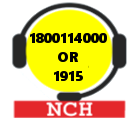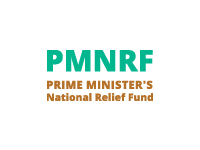[To be published in the Government of India Gazette, Part II, section (3) sub-section (i)]
MINISTRY OF CONSUMER AFFAIRS, FOOD AND PUBLIC DISTRIBUTION
(Department of Consumer Affairs)
NOTIFICATION
New Delhi, the 9th November, 2001
G.S.R 842(E) .—In exercise of the powers conferred by section 83 read with section 22 of the Standards of Weights and Measures Act, 1976 (60 of 1976), the Central Government hereby makes the following rules further to amend the Standards of Weights and Measures (General) Rules, 1987, namely:-
1 (1) These rules may be called the Standards of Weights and Measures (General) (Second Amendment) Rules, 2001.
(2) They shall come into force after expiry of one hundred eighty days of the date of their publication in the Official Gazette.
2. In the Standards of Weights and Measures (General) Rules, 1987, for part VII of the Eighth Schedule, the following shall be substituted, namely:-
Part VII
Part A
Clinical Thermometer - Solid stem type
Scope: This part specifies the requirements and methods of tests for solid stem type mercury in glass clinical thermometers having a maximum indicating device.
1. Terminology - For the purpose of this standard the definitions given in IS 2627 – 1979 Glossary of terms relating to liquid-in-glass thermometers (first Revision) as revised from time to time in addition to the following, shall apply.
2. Types – The thermometers shall be of the solid stem mercury – in – glass type.
3. Temperature Scale – The thermometers shall be graduated in degrees Celsius ( ºC) and shall have a range from 35 to 42 ºC or 35 to 43 ºC.
4. Testing - Thermometers shall be tested for total vertical immersion.
5. Requirements
(1) Patterns – There shall be two patterns of bulb, namely, oral and rectal as follows:
a. Oral – for thermometers for use in mouth and
b. Rectal – for thermometers for use in rectum
Note 1 – Oral thermometers may also be used in armpit or groin.
Note 2. Rectal thermometers may also be used in the mouth, armpit or groin after proper dis-infection. Rectal thermometers if used orally, may however give slightly lower reading.
(2). Materials
(i) Glass tubing – The thermometers shall be made from glass tubing conforming to IS 4529-1968 Specification for glass tubes for medical thermometers.
(ii) Bulb: The thermometer bulb shall be made from a type of glass which assures that the depression of zero, determined in accordance with the procedure given in Appendix D, does not exceed 0.07 ºC. The glass shall be identified visible and indelible, either by the glass manufacturer or by the manufacturer of the thermometer.
(iii) The types of glass used for the maximum device, capillary tube, and bulbs shall meet the following requirements:
When the glass is analyzed according to the requirements of IS 2303 (Part 1/Sec 1), the quantity of alkali passed into solution for 1g of glass must correspond to no more than 263.5 g of Na2O
(iv) Thermometric liquid - The thermometric liquid shall be pure, dry mercury
(3) Construction.
(i) The stem shall be in alignment with the bulb.
(a) The free end of the stem shall be finished smooth, preferably hemispherical in shape, as shown in Fig 1.
(ii) Maximum indicating device (constriction) – The thermometers shall have a maximum indicating devices (constriction) constructed in the capillary, between the mercury bulb and the scale in order to prevent the mercury in the stem from returning to the bulb on cooling. It shall be located in the bore between the top of the bulb and the bottom of the scale.
(a) The maximum indicting device shall pass the hardness test prescribed in Appendix A when an acceleration of 600 m/sec 2 is applied at the closed end of the bulb for a period of at least 2 minutes.
(iii) Locator
A locator may be drawn on the stem before the start of the scale to facilitate positioning the thermometer so that the mercury column is in full view. The locator may comprise a thick (1mm of more) dot or line or a rectangle of 1 x 3 mm.
(iv) Bulb – the bulb shall be cylindrical with a smooth rounded end and shall be in alignment with the stem.
(a) The diameter of bulb and the joint of bulb with stem shall no where exceed that of the stem. The joint shall be smooth and regular.
(b) The bulb shall be hemispherical at the tip.
(v) The bulb, capillary tube and mercury shall be sufficiently free from entrapped gas, debris and foreign bodies in order to ensure the correct functioning of the thermometer.
(4) Dimensions – The dimensional and scale requirements for solid stem type clinical thermometers, shall be as given in Table 1.
Table 1 Dimensional and Scale requirements for solid-stem clinical thermometers.
| Sl No. | Characteristic | Requirements |
|---|---|---|
| (1) | (2) | (3) |
| (i) | Scale range, ºC | 35.0 to 42.0 or 35.0 to 43.0 |
| (ii) | Smallest scale division ºC | 0.1 |
| (iii) | Over all length, mm | 100 to 115 |
| (iv) | Scale length,mm | 40 to 65 |
| (v) | External diameter of stem, mm | 4 to 6 |
| (vi) | Bulb length, mm | |
| (a) | Oral thermometer | 12 to 18 |
| (b) | Rectal thermometer | Not more than 9 |
| (vii) | External diameter of bulb, mm | |
| (a) | Oral thermometer | 2.0 to 3.5 |
| (b) | Rectal thermometer | 3.0 to 6.0 ( But not exceding that of stem) |
| (viii) | Distance from top of the constriction to the 35.5ºC mark, mm, Min | 10 |
| (ix) | Distance from the highest graduation line to top of stem, mm, Min | 8 |
| (x) | Scale spacing, mm Min | 0.5 |
Note: See Fig 3 in Is 8787: 1977
(5) Graduation and Numbering
(i) The thermometer scale shall be sub-divided in 0.1 ºC as shown in Fig 1.
(ii) The graduation lines shall be equally spaced and at right angels to the axis o the thermometer.
(iii) All graduation lines shall be of equal and uniform thickness of not more than ¼ of the length of the smallest scale division 0.15 mm which ever is less.
(iv) The pattern of graduation and numbering shall be as follows:
a. Every tenth graduation line shall be a long line (about 2 mm) which shall be numbered.
b. There shall be a medium line (about 1.5 mm) midway between two consecutive long lines, and
c. There shall be four short lines (about 1 mm) equally spaced between consecutive medium and long lines.
(v) When the thermometer is held in a vertical position and viewed from the front, the left-hand ends of the graduation lines shall lie on an imaginary vertical line (see Fig 1.)
(vi) The numbers shall be placed to the right of the axis in such a way that extension of the line to which they refer, would bisect them. The figures shall be placed parallel to the axis of the thermometer.
(vii) A distinguishing mark (say, an arrow) shall be marked at 37.0 ºC mark to indicate the normal temperature.
(viii) All graduation lines and numbering shall be clearly and permanently marked or etched on the stem and filled with a pigment The marking shall pass the test for permanency given in Annex B.
Note – The pigment may be black, red, green or blue as agreed to between the purchase and the supplied.
6. Performance Requirements
(1) Appearance – When heated to 42 ºC or so the mercury column shall look like a strip of uniform width with clarity and brightness throughout.
Note- This test takes care of all visual defects, for example, twist in the glass, aberrations, cloudiness, devitrification, etc.
(2) Ageing and Accuracy – (i) The clinical thermometers shall meet all the requirements after ageing by natural or artificial means.
Natural Ageing involves holding the thermometers at room temperature for four months after completion of the constriction. Artificial ageing method involves heat treatment of the bulb and constriction of the unfilled thermometer at a temperature and duration to be specified by the manufacture of the glass tubing.
(ii) Clinical thermometers shall after ageing ensure that their accuracy as measured by the method prescribed in Appendix B shall be ± 0.1 ºC for at least one year after the first official verification.
(3) Influence of Immersion Time–If a thermometer at temperature t1 (15 ºC < t1<30 ºC) is suddenly immersed in a well-stirred water bath having a constant temperature t2 (35.5 ºC<t2<42 ºC) and is withdrawn after 20 seconds the thermometer reading, after cooling to ambient temperature (15 ºC to 30 ºC),
i. shall comply with maximum permissible error requirement and
ii) shall not deviate from its stabilized reading for temperature t2 ºC by more than 0.005 ºC (t2 – t1) º C.
This stabilized reading is the thermometer reading obtained when the thermometer has been cooled to ambient temperature, after reaching complete thermal equilibrium with the water bath at a temperature t2 ºC. This reading g shall also meet the maximum permissible error requirements stipulated in paragraph 8(2)(ii).
Note – A free choice of test method is permitted, provided the law of the variation of the indication of the thermometer as a function of immersion time is known.
7. Marking and Packing
(1) Marking – Each clinical thermometer shall be legibly and indelibly marked on its stem with the following:
a. The letter º C near the top of the scales;
b. The word Oral or rectal as the case may be;
c. The manufacture’s name or his recognized trade-mark, if any;
d. A code number to trace the batch of manufacture; and
e. A recognized mark of the verifying authority showing the year of initial verification.
f. An indication identifying the glass used for the bulb, if the glass is not already identified by its maker;
g. The Standard Mark of the Bureau of Indian Standards.
(2) Packing – Clinical thermometers shall be securely packed, individually and collectively, in any manner acceptable to the purchaser so as to minimize the risk of damage in handling, transport an storage.
Appendix A
Test for Hardness of Maximum indicating device.
1. Apparatus
(1) Centrifuge – A centrifuge with radial arms 15 cm each. Each arm shall be provided with a pocket for keeping one or more clinical thermometers. Speed of the centrifuge shall be either fixed or adjustable to 600 ppm.
2. Procedure
(1) Place the thermometers for sometime in water at a temperature anywhere between 42 and 43 ºC. Then put them in the pockets of all the centrifuge, bulb facing outwards, that is away from the axis of the centrifuge while in rotation.
Let the centrifuge work steadily at it s correct speed for at least 2 minutes. Then stop it.
Take the thermometers out of the pockets and observe the mercury column.
Thermometers shall be taken as having satisfied the requirement of this test, if the mercury rests below or at 35 ºC a mark.
Important – It is necessary that the room temperature does not exceed 34.5 ºC during the test.
Appendix B
Test for Permanency of marking
1. Procedure
(1) Place the thermometers in a 5 percent (m/v) solution of phenol in water maintained at 37 ± 0.5 ºC for a period of 20 minutes.
(2) Wipe the thermometers dry with a piece of soft cloth and examine.
(3) The thermometers shall be considered to have passed the test if, after this treatment, the marking does not peel off anywhere.
Appendix C
Test for Accuracy
1. Apparatus
(1) Comparator Bath – Either screw type or bubbler type, as prescribed in IS 6274-1971 Method of calibrating liquid-in-glass thermometers, filed with water.
(2) Reference Thermometers – Calibrated reference thermometers (see schedule mark ISTI of IS 4825 : 1968)
2. Procedure
(1) After preliminary check of the clinical thermometers, carry out the accuracy test in accordance with 6.2 of IS 6274-1971 at 37.0 ±0.5 ºC, 39.0 ± 0.5 ºC and 41.0 o C ± 0.5 ºC respectively.
(2) The thermometers shall be considered to have passed this test if the accuracy so determined lies with in limits prescribed in paragraph 8(2).
Appendix D
DETERMINATION OF THE MEAN DEPRESSION OF ZERO OF THERMOMETERS
1. It is not possible to determine the depression of zero of clinical thermometers (mercury-in-glass, with the maximum indicating device) covered by this specification. Therefore, special test thermometers (paragraph 2) shall be manufactured from the glass being examined in order to conduct the necessary measurements.
2. The test thermometers must meet the following requirements.
1. Scale Range
At least from –3.0° C to +3.0° C.
2. Scale Interval
0.02° C,0.05° C or 0.1° C.
3. The scale spacing must be at least 1.0 mm.
4. The expansion chamber must be large enough to allow the thermometers to be heated to 400° C without damage.
5. The thermometers must be properly stabilized by the manufacturer and must meet the requirements of the stabilization test (see paragraph 3)
3. The proper stabilization of each test thermometer must be tested in accordance with the following provisions.
1. The thermometer is heated in a test bath (liquid bath or metal block type oven) from ambient temperature up to 350° C ± 10° C and keep at this temperature for at least five minutes. It is then cooled to 50° C in the test bath, which decreases in temperature by 10 to 15° C/h.
2. When the thermometer has reached a temperature of 50° C, it is removed from
the test bath and its 0° C correction value (K1) is determined with the help of a zero point (0° C) ice bath, which consists of a Dewar flask filled with finely crushed ice covered over with water. The water used to make the ice and the water in which ice is submerged must be pure. Its electrical conductivity must not exceed 10-3 S.m-1 at 20° C. The ice must be carefully tamped so that there are no air bubbles in the ice-water mixture. It must be compacted as much as possible both prior to measurement and periodically during measurement.
It is recommended that a water purifier, a refrigerator with ice trays and an ice crusher be employed for preparing the ice-water mixture.
3. The thermometer is then heated a second time to 350° C ± 10° C in the test bath and kept at this temperature for 24 hours. It is then cooled to 50° C, as before {paragraph 3(1)}.
4. When the thermometer has reached a temperature of 50° C, it is removed from the test bath and its 0° C correction value (K2) is determined once more.
5. K2 must not differ from K1 by more than 0.15° C. Thermometers which do not meet this requirement must not be used to determine the depression of zero.
4. The mean depression of zero is determined in accordance with the following provisions.
(1) At least three test thermometers must be used. They must be manufactured from the glass being tested, must have met the requirements of the stabilization test (paragraph 3), and not have been heated above the ambient temperature once value K2 has been determined {paragraph 3(4)}.
1. Each of these thermometers must be tested at least three times in accordance with the provisions of (paragraph 4(2)(i), 4(2)(ii) and 4(2)(iii) below.
i. The thermometer is kept in a test bath at 100° C ± 1.0° C for 30 minutes. It is then removed from the bath and allowed to cool in air. While it is cooling to ambient temperature, its bulb must not come into contact with other objects.
ii. The 0° C correction of the thermometer is determined not later than 15 minutes after the thermometer has been removed from the test bath. The correction value obtained is designated by the symbol K3.
iii. The thermometeris then kept for one week at a temperature between 20° C and 25° C. At the end of the week the 0° C correction is determined. This correction value is designated K4. The procedures described in paragraph 4(2) (i) and 4(2) (ii) are then repeated, and a 0° C correction value, designated K5 , is obtained.
iv. The procedures described in (paragraph 4(2)(iii) are repeated to obtain a series of n differences K2 – K3, K4 – K5, K2n+1. These are the values of the thermometer’s depression of zero from the first, second and n th series of measurements, respectively.
v. When n series of measurements have been made with m test thermometers, the following expression is obtained for the mean depression of zero of these thermometers:
1/mn [ (k2(i)-k3(i)) +(k4(i)-k5(i)) + (k2n(i)-k2n +1(i))]
which must not exceed 0.07° C (paragraph 7(2)(ii) In accordance with the provisions of paragraph 4(1) and 4(2), the conditions m > 3 and n> 3
must be met for m and n, and the standard deviation of the mean depression of zero determined in accordance with the aforementioned provisions, must not exceed ± 0.01° C.
vi. If a more accurate value for the mean depression of zero is required, at least five series of measurements on at least five test thermometers must be carried out.
Part – B
Clinical Thermometer -Enclosed Scale type
Scope: This part specifies the requirements and methods of test for enclosed scale type clinical thermometers having a maximum indicating device.
1. Terminology:
(1) For the purpose of this standard the definitions given in IS 2627 – 1979 Glossary of terms relating to liquid-in-glass thermometers as revised from time to time, in addition to the following, shall apply.
(2) Glass tubes - Sheath tubes, capillary tubes and bulb tubes.
2. Type – The thermometers shall be of the enclosed – scale mercury – in – glass type.
3. Temperature Scale – The thermometers shall have a translucent paper or plastic material strip duly graduated in degrees Celsius (ºC )and shall have a range from 35 to 42 ºC or 35 to 43 ºC.
4. Immersion – Thermometers shall be calibrated for total vertical/horizontal immersion.
5. Requirements
(1) Patterns – There shall be two patterns of bulb, namely, oral and rectal as follows:
a. Oral – for thermometers for use in mouth and
b. Rectal – for thermometers for use in rectum
Note 1. Oral thermometers may also be used in armpit or groin.
Note 2. Rectal thermometers may also be used in the mouth, armpit or groin after proper dis-infection
(2) Materials
(i) Glass tubing – The thermometers shall be made from glass tubing conforming to IS 4529-1968 Specification for glass tubes for medical thermometers.
(ii) Thermometric liquid - The thermometric liquid shall be pure, dry mercury
(iii) Strip – The strip bearing the scale shall be of a translucent or plastic material suitable for the temperature to be read.
(3) Construction.
(i) The thermometer sheath shall be in alignment with the bulb and it shall be round or oval.
(a) The free end of the sheath shall be finished smooth, preferably hemispherical in shape as shown in fig 1.
(ii) Maximum indicating device (constriction) – The thermometers shall have a maximum indicating devices (constriction) constructed in the capillary, between the mercury bulb and the scale in order to prevent the mercury in the stem from returning to the bulb on cooling.
(a) The maximum indicting device shall pass the hardness test prescribed in Appendix A when an acceleration of 600 m/sec 2 is applied at the closed end of the bulb for a period of at least 2 minutes.
(iii) Bulb – the bulb of the oral thermometers shall be cylindrical with a smooth rounded end and shall be in alignment with the sheath. The bulb of the rectal thermometers shall be pear-shaped.
(a) The diameter of bulb and the joint of bulb with sheath shall no where exceed that of the sheath. The joint shall be smooth and regular.
(b) The bulb shall be hemispherical at the tip.
(iv) Strip bearing the scale – It shall be placed tightly against the capillary tube inside the sheath and shall be firmly and securely fastened at the top of the thermometer in such a way that it can freely expand in length. The fixing shall not obscure the scale.
Note – A suitable method of fixing is by fusing a glass tube or rod to the sheath and to the upper end of the strip bearing the scale.
(v) Capillary tube – The capillary tube shall be smooth and uniform
(4) Dimensions – The dimensional and scale requirements for clinical thermometers, enclosed scale shall be as given in Table 1.
Table 1 Dimensional and Scale requirements for clinical thermometers, enclosed scale
| Sl No. | Characteristic | Requirements |
|---|---|---|
| (1) | (2) | (3) |
| (i) | Scale range, ºC | 35 to 42 or 35 to 43 |
| (ii) | Smallest scale division ºC | 0.1 |
| (iii) | Over all length, mm, Max | 120 |
| (iv) | Scale length, mm | 45 to 65 |
| (v) | External diameter of sheath,mm (round or oval), max | 12 |
| (vi) | External diameter of capillary,mm | 2 ± 0.2 |
| (vii) | External diameter of the bulb, mm | 4 ± 0.5 |
| (viii) | Bulb length, mm, max | 21 |
| (ix) | Thickness of strip, mm | 06. ± 0.1 |
| (x) | Distance above the constriction up to the 35 ºC mark, mm, Min | 10 |
| (xi) | Distance from the highest graduation line to top of sheath, mm,Min | 8 |
(5) Graduation and Figuring
(i) The thermometer scale shall be sub-divided in 0.1 ºC as shown in Fig 1.
(ii) The graduation lines shall be of black pigment, marked permanently on the strip. They shall be equally spaced and at right angels to the axis o the thermometer.
(iii) All graduation lines shall be of equal and uniform thickness of not more than 0.2 mm.
a. Every tenth graduation line shall be a long line (about 2 mm) which shall be figured.
b. There shall be a medium line (about 1.5 mm) midway between two consecutive long lines, and
c. There shall be four short lines (about 1 mm) equally spaced between consecutive medium and long lines.
(iv) When the thermometer is held in a vertical position and viewed from the front, the left-hand ends of the graduation lines shall lie on an imaginary vertical line (see Fig 1.)
(v) The figures shall be placed to the right of the axis in such a way that extension of the line to which they refer, would bisect them. The figures shall be placed parallel to the axis of the thermometer.
(vi) A distinguishing mark (say, an arrow) shall be marked at 37.0 ºC mark to indicate the normal temperature.
(vii) All graduation lines and figures shall be clearly visible.
6. Performance Requirements
(1) Appearance – When heated to 42 ºC or so the mercury column shall look like a strip of uniform width with clarity and brightness throughout.
Note- This test takes care of all visual defects, for example, twist in the glass, aberrations, cloudiness, devitrification, etc.
(2) Ageing and Accuracy – Clinical thermometers shall be adequately aged to ensure that their accuracy as measured by the method prescribed in Appendix B shall be ± 0.1 ºC for at least one year after the first official verification.
(3) Time of Response – The time of response of clinical thermometers, as checked by the method prescribed in Appendix C shall not exceed 8.0 seconds.
When the temperature is rising very slowly at a uniform rate, the jumping of the meniscus of the thermometric liquid does not exceed one-half of the smallest scale division.
7. Marking and Packing
(1) Marking – Each clinical thermometer shall be legibly and indelibly marked on its stem with the following:
a. The letter º C near the top of the scales;
b. The word Oral or rectal as the case may be;
c. The manufacture’s name or his recognized trade-mark, if any;
d. A code number to trace the batch of manufacture; and
e. A recognized mark of the verifying authority showing the year of initial verification.
f. The Standard Mark of the Bureau of Indian Standards
(2) Packing – Clinical thermometers shall be securely packed, individually and collectively, in any manner acceptable to the purchaser so as to minimize the risk of damage in handling, transport an storage.
Appendix A
Test for Hardness of Maximum indicating device.
1. Apparatus
(1) Centrifuge – A centrifuge with radial arms 15 cm each. Each arm shall be provided with a pocket for keeping one or more clinical thermometers. Speed of the centrifuge shall be either fixed or adjustable to 600 ppm.
2. Procedure
(1) Place the thermometers for sometime in water at a temperature anywhere between 42 and 43 ºC
(2) The put them in the pockets of all the centrifuge, bulb facing outwards, that is away from the axis of the centrifuge while in rotation.
(3) Let the centrifuge work steadily at it s correct speed for at least 2 minutes. Then stop it.
(4) Take the thermometers out of the pockets and observe the mercury column.
(5) Thermometers shall be taken as having satisfied the requirement of this test, if the mercury rests below or at 35 ºC a mark.
Important – It is necessary that the room temperature does not exceed 34.5 ºC during the test.
Appendix B
Test for Accuracy
1. Apparatus
(1) Comparator Bath – Either screw type or bubbler type, as prescribed in IS 6274-1971 Method of calibrating liquid-in-glass thermometers, filed with water.
(2) Reference Thermometers – Calibrated reference thermometers (see Schedule Mark 8 and 9 of the IS 425-1982 specification of liquid-in glass solid-stem reference thermometers (first revision)]
2. Procedure
(1) After preliminary check of the clinical thermometers, carry out the accuracy test in accordance with 6.2 of IS 6274-1971 at 37.6 ±0.5 ºC, 39.0 ± 0.5 ºC and 41 C ± 0.5 ºC respectively.
(2) The thermometers shall be considered to have passed this test if the accuracy so determined lies with in limits prescribed in paragraph 6(2).
Appendix C
Test of time of Response.
1. Apparatus – Same as in paragraph 1(1) and 1(2) of Appendix B provided that some automatic arrangement is made to switch off stirring at the instant the bulb of thermometers under test touch the water surface and to switch it again immediately after the thermometers are taken out of the water.
2. Procedure
(1) Set the comparator bath at a temperature of 41 ± 0.5 ºC Note the temperature on the reference thermometer.
(2) Shake down the clinical thermometers under test to maximum extent
Note – Centrifuge mentioned under para 1(1) of Annexure A may be used for this purpose, if required.
(3) Plunge the clinical thermometers into the bath up to 35 ºC mark. Take out suddenly after 7.5 to 8.0 seconds wipe and dry, Take their readings.
(4) Thermometers shall be considered to have passed this test, if they indicate temperature within ± 0.1 ºC of the comparator bath temperature noted in paragraph 2(1) of this Appendix.
Important – It is necessary that the room temperature does not exceed 34.5 ºC during the test.









 उपभोक्ता मामले विभाग
उपभोक्ता मामले विभाग










